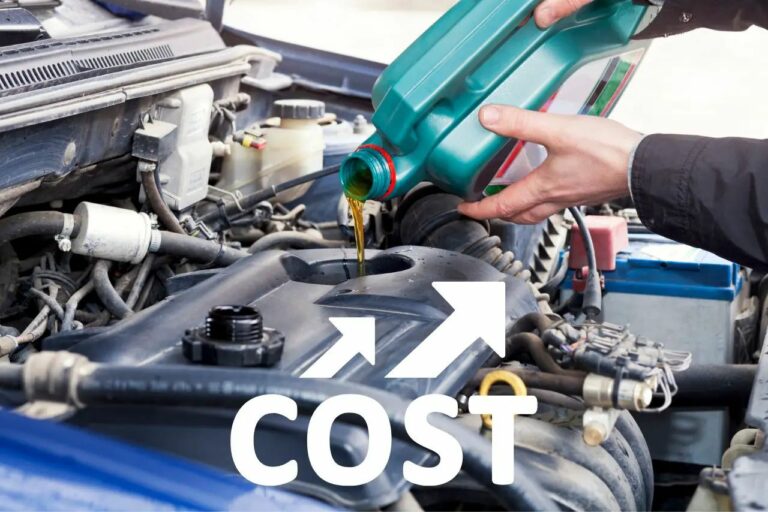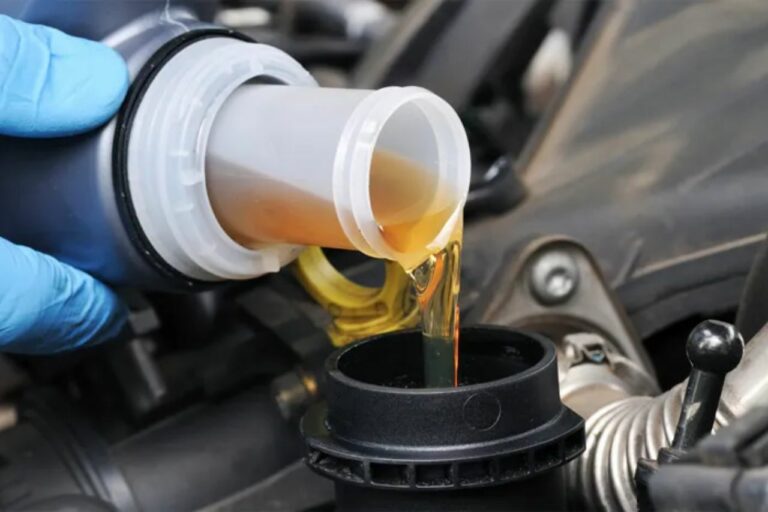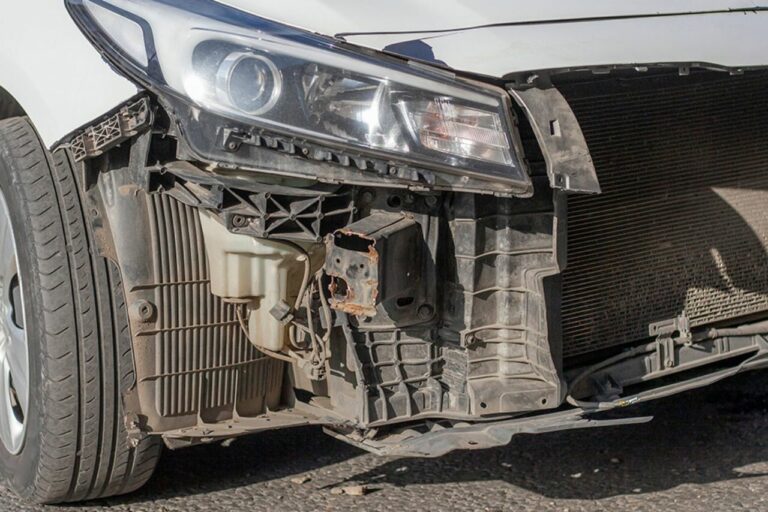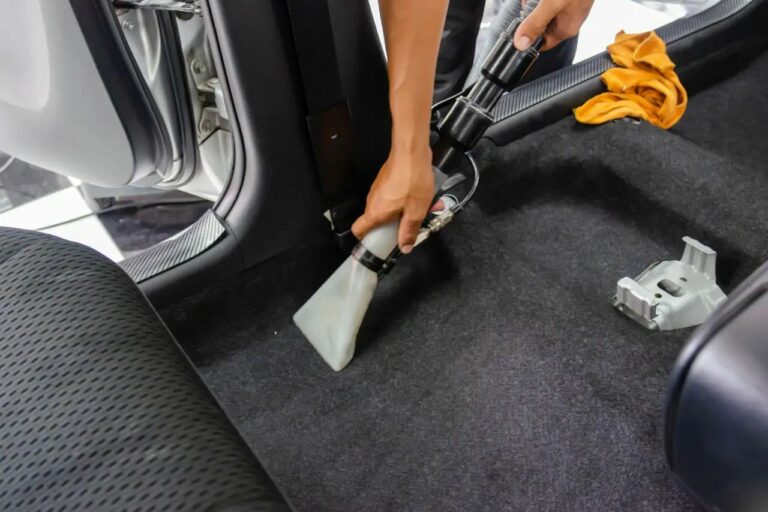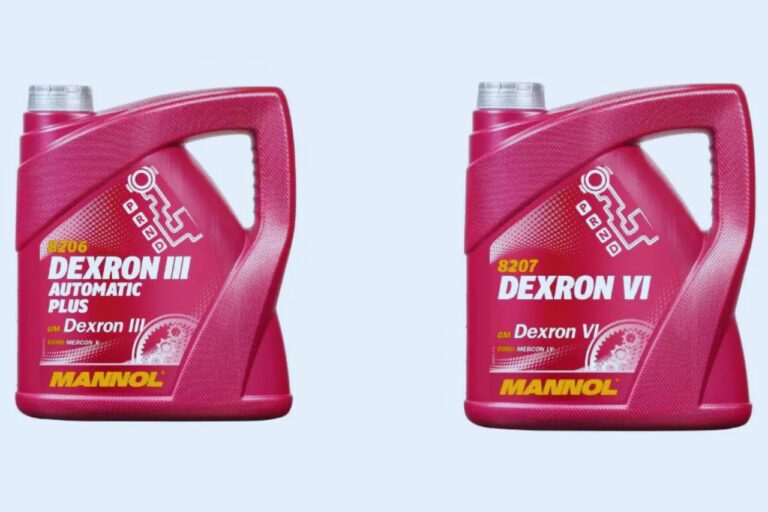How Much Undercarriage Rust Is Normal? (The Truth Revealed!)
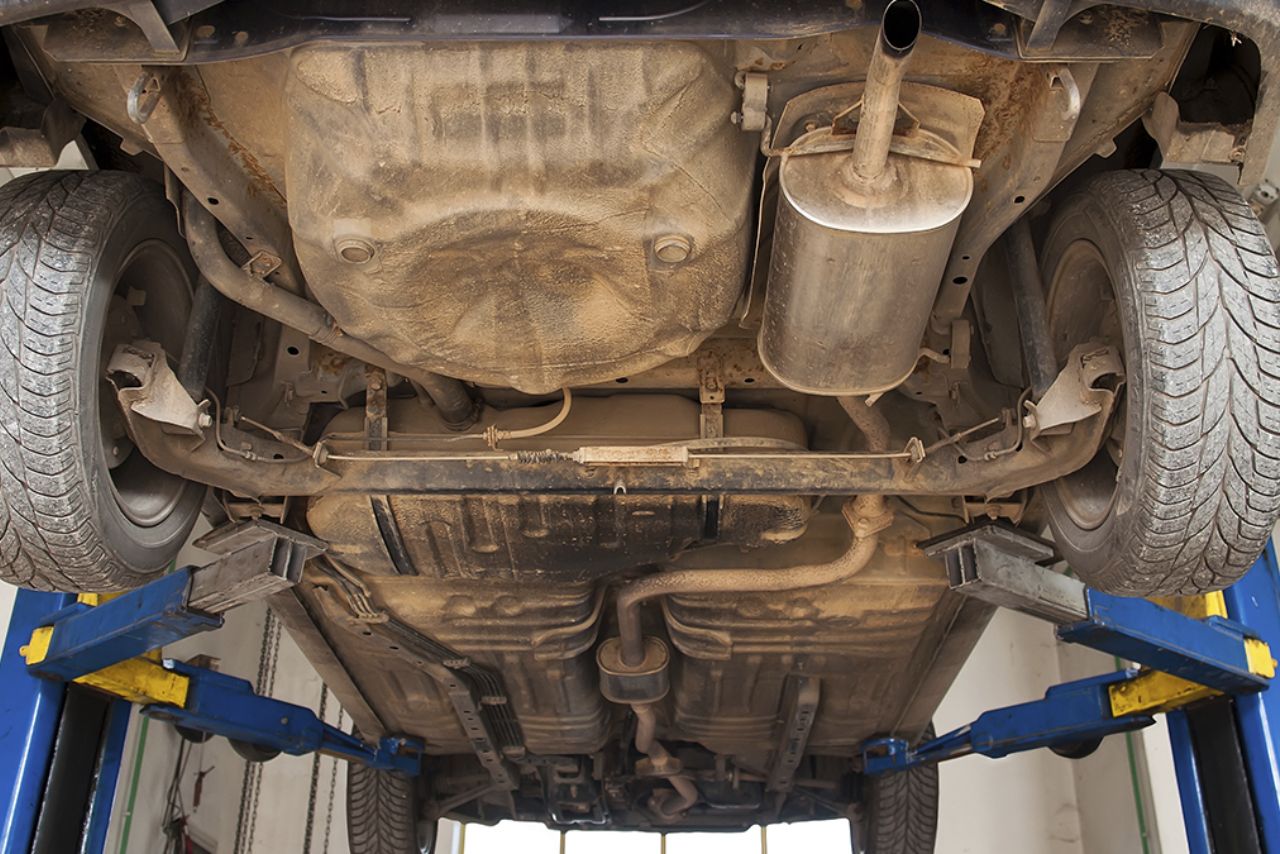
When it comes to the undercarriage of your car, rust can be a common and frustrating problem.
It’s important to understand how much undercarriage rust is normal, so you can properly address any issues and maintain the longevity of your vehicle.
How Much Undercarriage Rust Is Normal?
The amount of undercarriage rust on a vehicle can vary depending on several factors, including the age of the vehicle, the climate it’s been exposed to, and how well it’s been maintained. Some rust on the undercarriage is normal and to be expected, but excessive rust can be a sign of more serious issues.
It’s important to regularly inspect the undercarriage of your vehicle and address any rust or corrosion as soon as possible to prevent further damage.
Undercarriage rust can vary depending on a number of factors, such as the age of your car, your location, and how often you drive in harsh weather conditions.
In this article, we’ll explore what is considered normal undercarriage rust, the importance of addressing it, and prevention and maintenance tips to keep your car rust-free.
So, whether you’re a seasoned car owner or a new driver, read on to learn more about undercarriage rust and how to keep your car in top shape.
Understanding Undercarriage Rust:
You might be wondering how much undercarriage rust is normal, but don’t worry, we’re here to help you understand it!
To understand undercarriage rust, it’s important to understand the different types of corrosion.
There are two main types of corrosion: general and localized. General corrosion occurs evenly over the surface of the metal, while localized corrosion occurs in specific areas, often due to exposure to a particular substance or moisture.
Identifying rust-prone areas can also help you understand undercarriage rust. Areas that are more exposed to the elements, such as the underside of the car or the wheel wells, are more likely to develop rust.
Additionally, areas that are in contact with moisture, such as the brake lines or fuel tank, are also prone to rust.
By understanding the types of corrosion and identifying rust-prone areas, you can better understand how much undercarriage rust is normal and take steps to prevent it.
How Much Undercarriage Rust is Normal?
Typically, the amount of corrosion on the lower part of a vehicle is considered within the expected range because undercarriage rust is caused by exposure to moisture and salt on the road, which is inevitable for any car that’s driven regularly.
However, the severity of rust can vary depending on the age of the vehicle, the climate it’s driven in, and how well it’s been maintained.
Here are some factors to consider when evaluating the severity of undercarriage rust:
- The location of the rust: Rust on the body of the car is more serious than rust on the exhaust or suspension.
- The thickness of the rust: If the rust is only surface-level and hasn’t eaten through the metal, it can be treated with rust inhibitors or sandblasting.
- The age of the car: Newer cars are less likely to have severe undercarriage rust, while older cars may have more rust due to wear and tear.
- The climate: Cars driven in areas with harsh winters or near the coast are more likely to have undercarriage rust due to exposure to salt and moisture.
- Maintenance history: Regular cleaning and rust prevention treatments can help prevent undercarriage rust from becoming severe.
If you notice significant rust on the undercarriage of your vehicle, it’s important to address it promptly to prevent further damage and potential safety hazards.
Repair options may include patching or replacing affected parts, depending on the severity of the rust.
To prevent undercarriage rust in the future, regularly clean your car’s undercarriage, avoid driving in harsh conditions when possible, and use rust inhibitors or coatings as recommended by your mechanic.
The Importance of Addressing Undercarriage Rust:
If you haven’t addressed the undercarriage rust on your vehicle, it’s important to do so. Ignoring it could put the structural integrity of your car at risk, which could impact your safety on the road.
Rust can weaken the frame, suspension, and other critical components of your vehicle, so it’s crucial to take action before it’s too late.
Structural Integrity of Your Car:
When inspecting the undercarriage of your car, it’s important to ensure that there are no signs of rust or corrosion that could compromise the structural integrity of the vehicle.
Rust can weaken the metal components of your car’s undercarriage, making them more prone to bending, breaking, or even collapsing.
This can be especially dangerous if you’re driving at high speeds or over rough terrain.
To evaluate the damage caused by undercarriage rust, it’s best to seek a professional inspection from a certified mechanic.
They can evaluate the extent of the rust and determine if it’s safe to continue driving your car.
If the rust is severe, they may recommend replacing the affected parts to ensure the structural integrity of your car is maintained.
Remember, neglecting undercarriage rust can result in serious safety hazards and costly repairs down the road.
Safety on the Road:
As you hit the road, it’s crucial to keep in mind that safety should always be your top priority.
One of the most important aspects of road safety is the maintenance of your vehicle.
Regular maintenance can help prevent accidents caused by faulty brakes, worn-out tires, or other mechanical failures.
To ensure your vehicle is in top condition, here are some maintenance tips to keep in mind:
- Check your tire pressure regularly and ensure they have enough tread depth
- Replace your brake pads and rotors as needed
- Keep your headlights, taillights, and turn signals in working order
In addition to these maintenance tips, it’s also important to be aware of your surroundings and drive defensively.
Avoid distractions like texting or eating while driving, and always wear your seatbelt.
By taking these precautions and keeping up with your vehicle’s maintenance, you can help ensure a safe and enjoyable driving experience.
Prevention and Maintenance:
To prevent undercarriage rust in your vehicle, you should make sure to regularly wash your car to remove any salt or other corrosive materials.
Additionally, applying a rust inhibitor spray can help to prevent rust from forming in the first place.
Finally, protective coatings such as undercoating or wax can provide an extra layer of protection against rust.
By following these maintenance practices, you can help to prolong the life of your vehicle and prevent costly repairs down the road.
Regular Car Washes:
For optimal maintenance of your vehicle, it’s important to regularly wash your car to prevent excessive undercarriage rust.
Here are some reasons why regular car washes are important:
- Removes road salt and debris: Salt and other debris on the road can accumulate on the undercarriage of your vehicle, causing rust to form over time. Regular car washes can remove this buildup and prevent rust from forming.
- Helps maintain the paint job: Regular car washes can help maintain the paint job on your vehicle, which can also help prevent rust from forming. Paint acts as a protective layer, so keeping it clean and free of debris can help prevent rust from forming underneath.
- Increases resale value: Regular maintenance, including regular car washes, can increase the resale value of your vehicle. A vehicle with little to no rust is more valuable than one with excessive rust, so keeping up with regular car washes can pay off in the long run.
Regular car washes are an important aspect of maintaining your vehicle. They can help prevent undercarriage rust from forming and increase the resale value of your vehicle. So, make sure to schedule regular car washes to keep your vehicle in top condition.
Rust Inhibitor Sprays:
Using rust inhibitor sprays can significantly prolong the lifespan of your vehicle by preventing rust from forming on the metal surfaces.
These sprays work by creating a protective barrier that prevents moisture and oxygen from reaching the metal, which are the two main ingredients needed for rust to form.
By regularly applying rust inhibitor sprays, you can prevent rust from forming on your vehicle’s undercarriage, which can save you from expensive repairs in the long run.
When looking for the best rust inhibitor brands, it’s important to choose a brand that is specifically designed for automotive use.
Some popular brands include POR-15, Rust-Oleum, and Eastwood Rust Encapsulator.
These brands have been proven to be effective at preventing rust and corrosion on metal surfaces.
It’s also important to follow the manufacturer’s instructions when applying the spray to ensure that you’re using it correctly and effectively.
By incorporating rust inhibitor sprays into your regular car maintenance routine, you can prevent undercarriage rust and prolong the lifespan of your vehicle.
Protective Coatings:
Don’t let rust destroy your beloved car – protective coatings are a game-changer in preventing corrosion and maintaining the pristine condition of your vehicle.
Protective coatings are typically made of special materials that are designed to resist rust, moisture, and other corrosive elements that can damage your car’s undercarriage.
These coatings come in various forms, including sprays, paints, and films, and they can be applied to different parts of your car’s undercarriage, such as the frame, axles, and suspension.
Here are four reasons why protective coatings are a must-have for your car’s undercarriage:
- Provides a barrier against moisture: Moisture is one of the primary causes of rust, and protective coatings act as a barrier against moisture, preventing it from penetrating the surface of your car’s undercarriage.
- Enhances durability: Protective coatings increase the lifespan of your car’s undercarriage by providing an extra layer of protection against wear and tear.
- Reduces maintenance costs: By preventing rust and corrosion, protective coatings reduce the need for costly repairs and maintenance.
- Improves resale value: A car with a well-maintained undercarriage is more valuable than a car with a rusty undercarriage. Protective coatings can help you maintain the value of your car over time.
Investing in protective coatings is a smart move for anyone who wants to keep their car looking and running like new. With the right coating and application, you can prevent rust and corrosion from taking hold in your car’s undercarriage, extending its lifespan and resale value.
DIY Rust Repair:
To perform DIY rust repair on your vehicle, you’ll need specific tools and materials. These include a grinder, wire wheel, sandpaper, rust converter, primer, and paint.
With step-by-step instructions, you can learn how to properly remove rust and prevent it from returning.
Tools and Materials:
One must have the proper tools and materials to effectively assess the amount of undercarriage rust on a vehicle.
To start, you will need a good flashlight, a jack and jack stands, a wire brush, sandpaper, rust converter, rust inhibitor, and a paint brush.
These tools and materials will help you get a clear view of the rusted areas and effectively treat the rust to prevent further damage.
To help you better understand the importance of these materials, here is a table outlining the common causes of undercarriage rust and prevention techniques:
| Common Causes | Prevention Techniques |
|---|---|
| Salt and moisture exposure | Wash the vehicle regularly and apply rust inhibitor |
| Road salt and de-icing chemicals | Avoid driving in snow and ice, or wash the undercarriage frequently |
| Dirt and debris buildup | Regularly clean the undercarriage |
| Scratches and dents | Repair any damage immediately and apply rust converter |
By utilizing these tools and materials and following prevention techniques, you can effectively assess and treat undercarriage rust on your vehicle, ensuring its longevity and maintaining its value.
Step-by-Step Instructions:
Get ready to tackle those pesky rust spots on your car’s undercarriage by following these easy step-by-step instructions.
Start by thoroughly cleaning the undercarriage to remove any debris or dirt. This will help you better detect any rust spots that need to be addressed.
Use a high-pressure washer or steam cleaner to blast away any buildup that may be hiding the rust.
Next, use rust detection techniques to locate any rust spots that need to be addressed.
Here’s a quick step-by-step guide to help you with this process:
- Use a flashlight to inspect the undercarriage thoroughly. Look for any signs of rust or corrosion.
- Use a rust converter to neutralize any rust spots. This will help prevent the rust from spreading.
- Sand down any rust spots to remove any loose rust.
- Apply a rust inhibitor to prevent any further corrosion.
By following these easy steps, you can effectively tackle undercarriage rust and keep your car in tip-top shape. Remember to always wear protective gear when working on your car, and to take your time to ensure that you are addressing all the rust spots.
Professional Rust Repair:
Professional rust repair involves using specialized tools and techniques to remove and repair any corrosion on the undercarriage of a vehicle.
This process typically involves sandblasting, grinding, and applying rust inhibitors to prevent future rusting.
It is important to note that professional rust repair is not a quick or cheap fix, but it is necessary to ensure the longevity and safety of your vehicle.
To give you an idea of what professional rust repair entails, here is a table outlining some common rust removal techniques and rust resistant materials used by professionals:
| Rust Removal Techniques | Rust Resistant Materials |
|---|---|
| Sandblasting | Galvanized Steel |
| Grinding | Aluminum |
| Chemical Rust Removers | Stainless Steel |
| Rust Inhibitors | Zinc |
| Undercoating | Epoxy |
As you can see, professional rust repair involves a variety of tools and materials to effectively remove and prevent rust. While it may be tempting to try and fix rust on your own, it is always best to leave it to the professionals to ensure that the job is done correctly and thoroughly.
Rust-Proofing Your Car:
Now that you know how professional rust repair works, it’s time to learn how to prevent rust from forming in the first place. This is where rust-proofing your car comes in.
Rust-proofing is an essential part of car maintenance that involves applying a protective coating to your car’s undercarriage to prevent corrosion.
The main purpose of rust-proofing is to prevent rust from forming on your car’s undercarriage.
This is important because the undercarriage is one of the most vulnerable parts of your car when it comes to rust.
The undercarriage is constantly exposed to moisture, salt, and other corrosive elements, which can cause rust to form quickly.
By rust-proofing your car, you can protect the undercarriage from these elements and ensure that your car stays rust-free for as long as possible.
Frequently Asked Questions:
Can undercarriage rust eventually cause a car to fail inspection?
Undercarriage rust can cause long term effects that can eventually lead to a failed inspection. Repair options include sanding down the rust and applying protective coatings or replacing the affected parts entirely.
Is undercarriage rust more common in certain areas of the country?
Undercarriage rust is more common in areas with high humidity, salt exposure, and harsh winters. Rust prevention methods include regular washing and applying protective coatings. Climate can have a significant impact on undercarriage rust, making it essential to take preventive measures.
How often should I have my undercarriage inspected for rust?
To prevent rust from becoming a problem, you should have your undercarriage inspected annually. Consider applying an undercoating to protect the metal. Regular cleaning and keeping the vehicle in a dry environment also helps maintain the undercarriage.
Can undercarriage rust affect the performance of the car?
Undercarriage rust can have adverse effects on the car’s performance. It can weaken the structural integrity, cause parts to malfunction, and compromise safety. Prevention is crucial through regular inspections, washing, and applying protective coatings.
Are there any specific cleaning products or techniques that can prevent undercarriage rust?
To prevent rust, regularly wash the undercarriage with a high-pressure washer and a rust removal solution. Apply a rust inhibitor and inspect for any signs of rust or damage. Promptly repair and repaint any affected areas.
Conclusion: How Much Undercarriage Rust Is Normal?
Undercarriage rust is a common issue for many vehicles, especially those that have been exposed to harsh weather conditions or have not been properly maintained.
A small amount of rust on the undercarriage is normal and to be expected, as it is a natural result of exposure to moisture and road salt.
However, excessive rust can be a sign of more serious issues, such as poor maintenance or a structural problem.
It’s important to regularly inspect the undercarriage of your vehicle and address any rust or corrosion as soon as possible to prevent further damage and ensure the safety and longevity of your vehicle.

